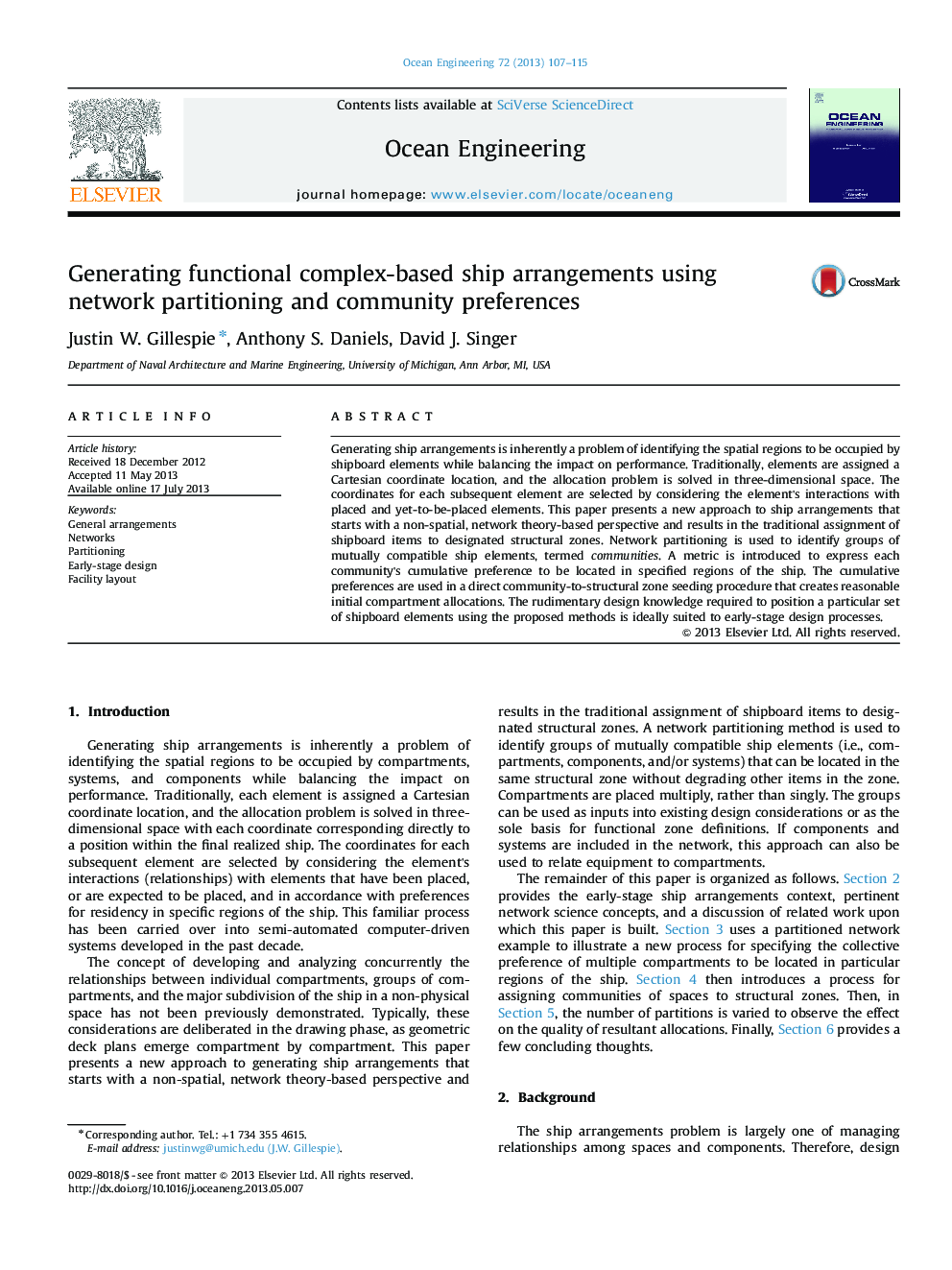| Article ID | Journal | Published Year | Pages | File Type |
|---|---|---|---|---|
| 8066483 | Ocean Engineering | 2013 | 9 Pages |
Abstract
Generating ship arrangements is inherently a problem of identifying the spatial regions to be occupied by shipboard elements while balancing the impact on performance. Traditionally, elements are assigned a Cartesian coordinate location, and the allocation problem is solved in three-dimensional space. The coordinates for each subsequent element are selected by considering the element's interactions with placed and yet-to-be-placed elements. This paper presents a new approach to ship arrangements that starts with a non-spatial, network theory-based perspective and results in the traditional assignment of shipboard items to designated structural zones. Network partitioning is used to identify groups of mutually compatible ship elements, termed communities. A metric is introduced to express each community's cumulative preference to be located in specified regions of the ship. The cumulative preferences are used in a direct community-to-structural zone seeding procedure that creates reasonable initial compartment allocations. The rudimentary design knowledge required to position a particular set of shipboard elements using the proposed methods is ideally suited to early-stage design processes.
Keywords
Related Topics
Physical Sciences and Engineering
Engineering
Ocean Engineering
Authors
Justin W. Gillespie, Anthony S. Daniels, David J. Singer,
